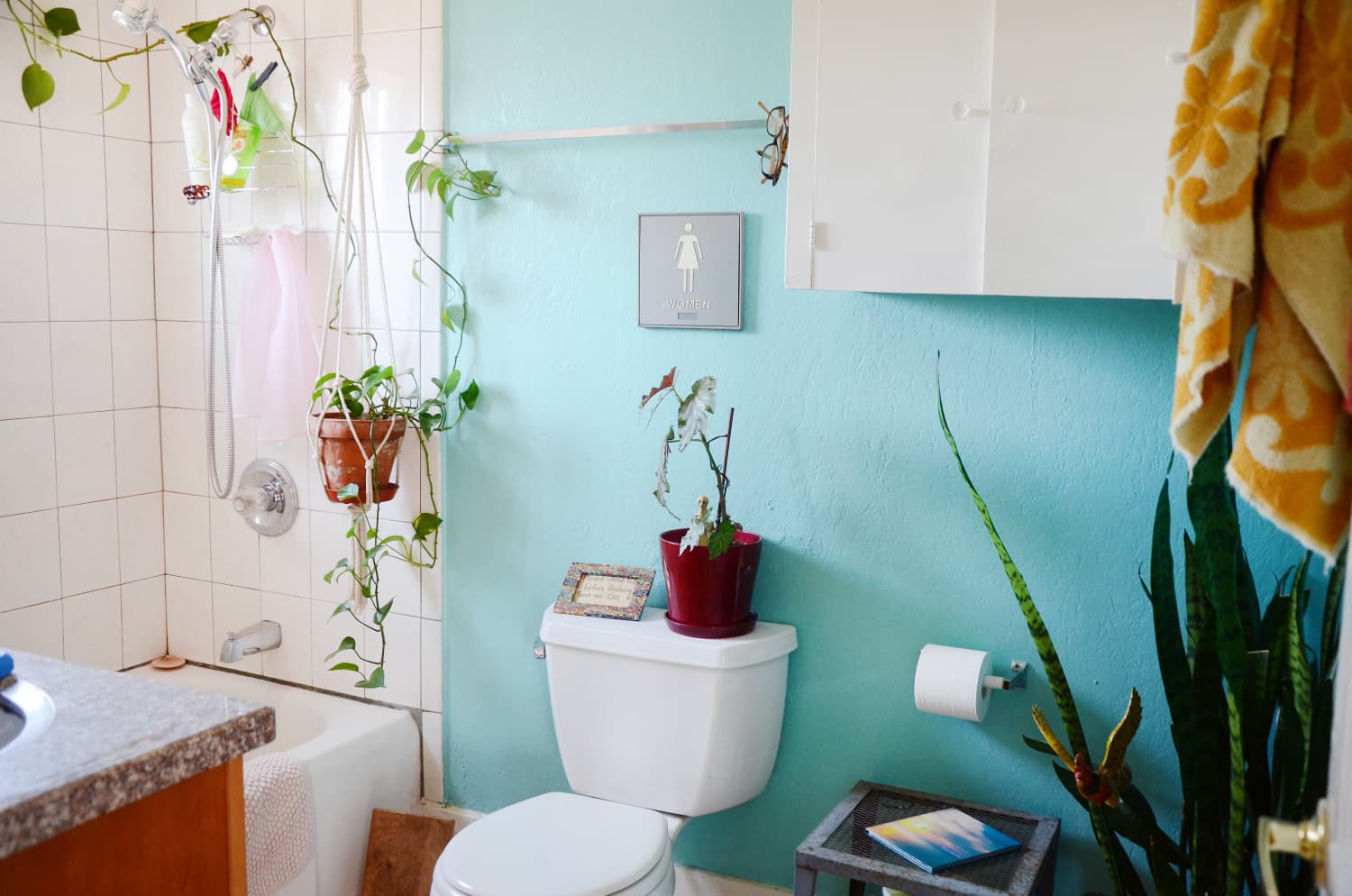
Doing your chores as a kid may have netted you an allowance. Now, as an adult, staying atop your chore list can save you from costly repairs. But there's one bathroom task that may go overlooked, especially if you're a first-time homeowner and don't know to do it in the first place: Changing your toilet flappers.
A glamorous task it is not, but a lot is at stake when it comes to keeping up with this home maintenance chore. (Quick explainer in case you're wondering what the heck flappers of the non Jazz-era variety are: Take the lid off your toilet's tank, and you'll see a rubber device that's attached to the tank lever by a chain. That's your toilet's flapper, and it's instrumental in its flushing function!)
"One of the biggest reasons why changing out toilet flappers is absolutely necessary is due to the fact that faulty toilet flappers are the main cause of running toilets," says Ryan Thompson, a residential plumber in Florida. "This causes you to waste water, which increases your water utility bill. It also leads to overflow which can turn into water damage if not taken care of right away. It's such a small chore to do, but if it's not done can lead to expensive repairs."
In fact, according to a PSA from Tampa Bay Water: A leaky flapper can fill an average size swimming pool four times in less than a year, which would cost homeowners hundreds of dollars on their water bills. Things get even more expensive if you end up with water damage.
The good news? You don't have to change out your flappers all that frequently, and there are ways to test for leaky flappers so you know when to replace them.
Typically, your flappers need to be replaced every two to three years, says Aaron Mulder, co-owner and operations manager for Mr. Rooter Plumbing of San Antonio, a Neighborly company. Over time, the rubber degrades, wears out, and develops cracks. Small cracks are hard to detect, but larger ones will cause a slow trickling sound in your toilet when it shuts off, which will prompt your toilet to turn on again and refill the tank every few minutes or so, he explains.
An important point: If you live in an area that doesn't have water softener, you may need to replace your flappers more frequently because hard water can wear them out quicker, says Brian Cardwell, vice president of plumbing services with Stan's Heating, Air and Plumbing in Austin, Texas.
Changing out your flappers for the first time? Mulder walked us through the process.
First, test for a leaking flapper
Add a few drops of food coloring to the top of the tank where the flapper and flush valve are located, Mulder says. Give it a few minutes, then check to see if the water inside your toilet bowl has turned colors. "If it is, you know you have a leaking or passing flapper," Mulder says.
The good news is that this repair is simple and inexpensive. (I recently changed the flappers out on all three of my toilets for $30). Home improvement stores carry flappers.
Figure out what type of flapper goes with your toilet
While some flappers are marketed as universal, you'll want to make sure you get one that fits your toilet. If you're unsure, Mulder recommends taking a photo of the flapper and flush valve mechanism to make sure you buy the correct part.
Remove your old flapper
Turn off the water supply to your toilet. Find the shut off valve near the floor behind the toilet. Turn it all the way to the right. Flush the toilet to drain the tank. Remove the existing flapper by reaching in and disconnecting its side hooks. Slowly pull the round rubber flapper/stopper upwards toward you. As you bring the old flapper up, release the chain that attaches it to the horizontal trip lever near the top of the tank.
Install the new toilet flapper
Place the new flapper in the tank and attach to the side hooks in the floor of the tank. Attach the new flapper's chain to the trip lever. Be sure to leave enough slack so that the flapper can fully close, covering the flush valve seat. Turn the toilet's water supply back on. Flush the toilet to test. After the flush is completed, you should hear the welcome sound of silence.
That's it! You've replaced the flapper and saved yourself on your water bill. Now go ahead and give yourself a star sticker.
Source: apartmenttherapy.com

Комментариев нет:
Отправить комментарий